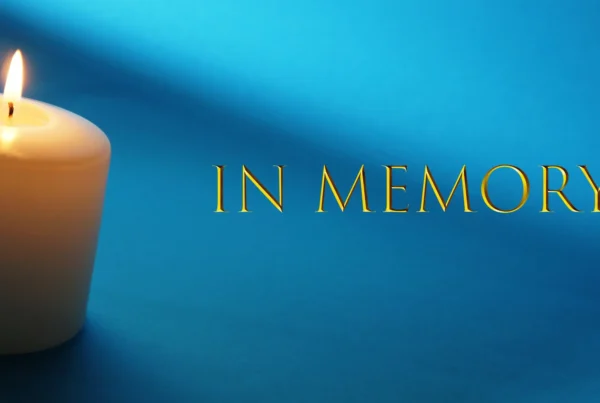By DAVID FERGUSON
THE COVID-19 lockdown was expected to create long-term health and wellbeing issues, but the extent of that impact is beginning to emerge with the reality that many community facilities across Scotland will never re-open.
According to a recent Covid-19 survey of public operators by Community Leisure UK, current forecasts are that around 116 public sport, leisure and culture facilities across all regions of Scotland – including 18 leisure centres and eight swimming pools – are facing permanent closure as a result of the lockdown. A further 900 that could re-open may not do so for some time and if local authorities, facing significant post-Covid budget challenges, reduce budgets for sport and leisure in 2021-22 those numbers could rise further.
This is not good news for a Scottish population, two-thirds of whose adults, and significant numbers of children, are classed as obese and overweight. The OSS reported in 2019 on Scotland’s ‘Divided Nation’ of disparity in activity between deprived and affluent areas, with rises in cycling and fitness work among higher socio-economic groups being mirrored by falls in sport activity across low socio-economic groups, from ages 12 upwards. The Scottish Government is seeking to develop a ‘Health and Wellbeing’ agenda, with prevention of illness from an early age key to change. An accessible community infrastructure is clearly vital to that.
The Observatory for Sport in Scotland (OSS) was created in 2016, however, to bring clarity to such issues through factual evidence that helps both to identify the key problems and provide sustainable solutions. Over the past year, we have been engaging with trusts, local authorities, sport bodies and a range of community stakeholders to investigate and share research into better models of community delivery, that have been piloted in Scotland and widely across Europe. Scandinavian countries and the Netherlands are among those to have changed approach over the past two decades to tackle very similar problems to Scotland’s, and create not only more sustainable provision, but also long-term benefits for health and wellbeing, and physical activity in all ages of the population.
Though Scotland has witnessed a rise in some outdoor sport activity, notably walking, cycling and fitness work, wider sport participation continues to fall in areas of deprivation. Community activity still relies heavily on local facilities, mostly owned by local authorities and managed by 27 leisure trusts, and the drop in funding over the past 20 years has hit that. These charities, such as Glasgow Life, Edinburgh Leisure, Highlife Highland, Sport Aberdeen, Active Stirling and Live Borders, currently manage more than 1400 facilities across Scotland. This includes key national sports and culture facilities, 197 leisure centres, 466 outdoor sports courts and pitches, and 49 parks, as well as over 250 town and community halls, and theatres, 232 libraries and community use of schools in most regions.
The survey revealed that around 116 facilities are now at risk of permanent closure, including 18 leisure centres and eight swimming pools, alongside 80 town and community halls, and 35 libraries. Beyond that, a staggering 930 facilities across all parts of Scotland are not included in current plans for re-opening, largely due to expected income expected to remain below operational costs for some time due to coronavirus restrictions. However, it could be more serious than that as 38% of all trusts state that their whole operation is in danger of going bust in 2020, and 70% are fearful of being unviable by the summer of 2021, which would leave their local authorities with the burden of having to try to bring all facilities and staff back in-house, and find additional funding.
However this unfolds, it will cause significant impact on community clubs who rely on public facilities and schools, and disproportionately affect children, disabled people and deprived communities as many among the 400 facilities planning to open in September and October are re-shaping services to prioritise those who pay memberships, above free and reduced-cost community access, in order to give the trust the chance to stay afloat.
The Scottish trusts currently employ over 16,500 staff, most significantly among 18-34 year olds, and have over 12,000 volunteers supporting a wide range of activities that contributed to a total number of 77m visits last year. Since being formed over the past 20 years, mainly, to run public facilities with their own boards, management staff and strategic visions, most have suffered annual reductions in council investment.
A key benefit to this model was the saving of business rates relief due to their charitable status. This has saved many community facilities from closure and enabled a growth in services. The first major nationwide threat to that model came in 2017 when the Scottish Government proposed to remove rates relief, as recommended by the Barclay Report, but, faced with the prospect of around 60% of Scotland’s public facilities closing, to meet a combined £46m tax bill in 2018, the government backed down and kept the relief in place.
However, Glasgow Life warned at the OSS National Sport Summit in November that the current model of delivery of public sport and leisure was “broken and unsustainable”. Facility closures were already looming pre-Covid, notably in deprived communities, as council funding continues to fall and trusts become increasingly reliant further on fitness classes and memberships, catering and donations, to fund the provision. The combined turnover across the trusts is in excess of £435m. Councils once provided most trust income to ensure affordable local access; they now contribute a combined £122m. Community Leisure UK stated that another £120m would be required to enable all Scottish facilities to re-open, even with reduced hours, but some councils are doubtful of even being able to match the current funding level in 2021-22.
The Scottish Government is expected to provide further Covid-19 relief funding to local authorities, but this will not be ring-fenced for sport, leisure and culture.
The impact may hit the most deprived communities greatest, where usage is high but facility income is much lower than in affluent areas, but few are likely to escape with children’s and old people’s clubs, swimming lessons, casual community sport and a wide variety of social and mental health, and social prescribing activity at risk of disappearing altogether.
Mark Tweedie, the chief executive of Community Leisure UK, stated: “The public need to be made fully aware that their cherished public leisure services are at risk because, due to income losses, local authorities will not be capable of financially sustaining them through the Covid-19 crisis without government financial support.
“Public leisure centres are at the heart of communities – they are places where communities connect and they serve all age ranges and abilities, from parents with babies, through to sports clubs, walking groups and gentle exercise classes for the less fit.”
For more information on the OSS research, contact David Ferguson at: david@oss.scot.




Thought Piece from Charlie Raeburn for Reform Scotland